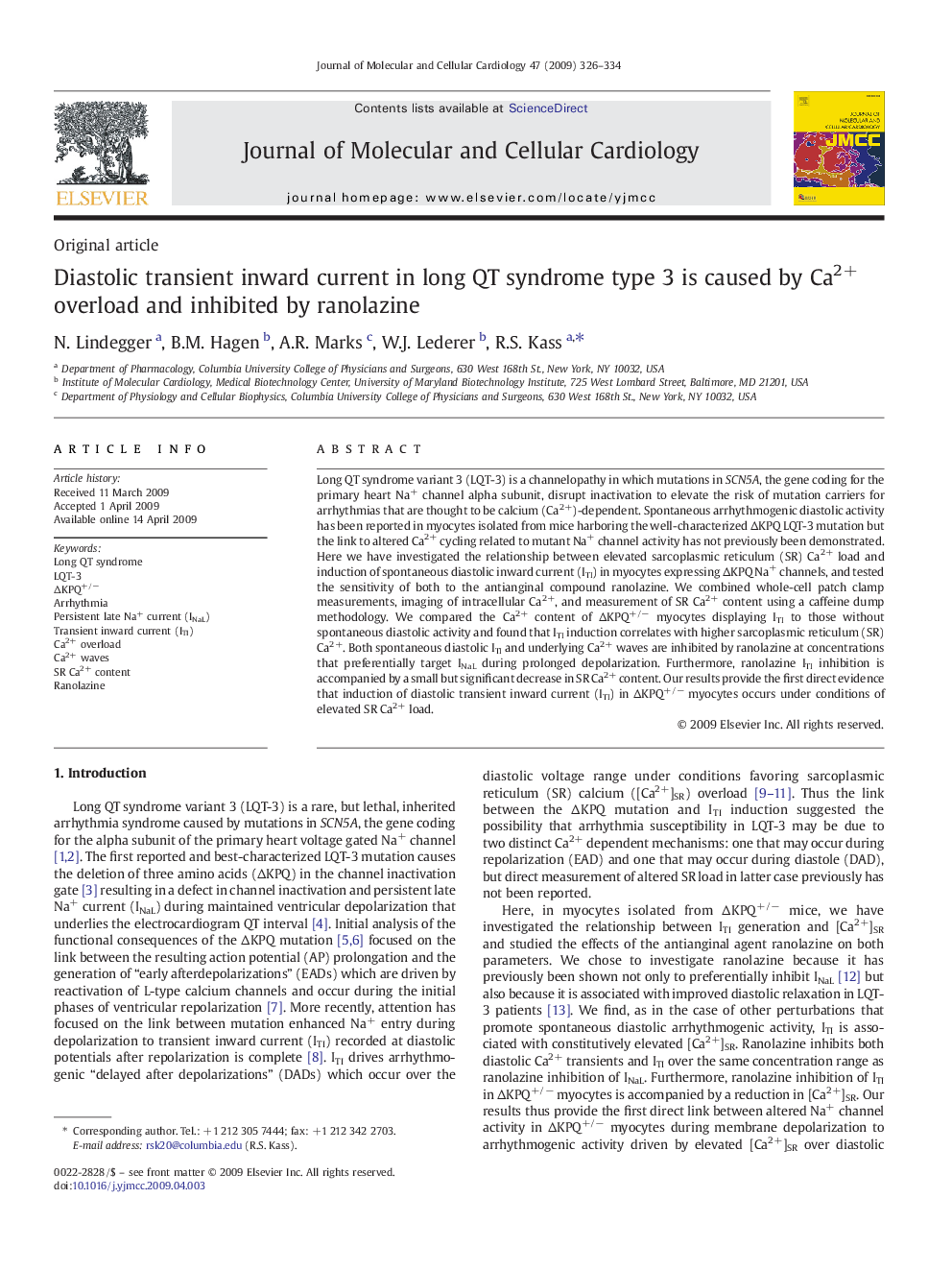| Article ID | Journal | Published Year | Pages | File Type |
|---|---|---|---|---|
| 2190997 | Journal of Molecular and Cellular Cardiology | 2009 | 9 Pages |
Long QT syndrome variant 3 (LQT-3) is a channelopathy in which mutations in SCN5A, the gene coding for the primary heart Na+ channel alpha subunit, disrupt inactivation to elevate the risk of mutation carriers for arrhythmias that are thought to be calcium (Ca2+)-dependent. Spontaneous arrhythmogenic diastolic activity has been reported in myocytes isolated from mice harboring the well-characterized ΔKPQ LQT-3 mutation but the link to altered Ca2+ cycling related to mutant Na+ channel activity has not previously been demonstrated. Here we have investigated the relationship between elevated sarcoplasmic reticulum (SR) Ca2+ load and induction of spontaneous diastolic inward current (ITI) in myocytes expressing ΔKPQ Na+ channels, and tested the sensitivity of both to the antianginal compound ranolazine. We combined whole-cell patch clamp measurements, imaging of intracellular Ca2+, and measurement of SR Ca2+ content using a caffeine dump methodology. We compared the Ca2+ content of ΔKPQ+/− myocytes displaying ITI to those without spontaneous diastolic activity and found that ITI induction correlates with higher sarcoplasmic reticulum (SR) Ca2+. Both spontaneous diastolic ITI and underlying Ca2+ waves are inhibited by ranolazine at concentrations that preferentially target INaL during prolonged depolarization. Furthermore, ranolazine ITI inhibition is accompanied by a small but significant decrease in SR Ca2+ content. Our results provide the first direct evidence that induction of diastolic transient inward current (ITI) in ΔKPQ+/− myocytes occurs under conditions of elevated SR Ca2+ load.
